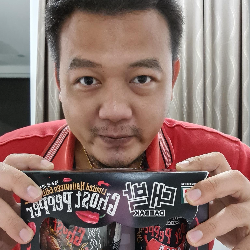Vue.js, a progressive JavaScript framework for building user interfaces has some very unique interesting features:
1. Reactivity System
Vue uses a reactive data-binding system that automatically updates the DOM when data changes, reducing the need for manual DOM manipulation.
2. Component-Based Architecture
Vue encourages building applications with reusable components, which can be nested and combined to manage complexity.
3. Single-File Components (SFC)
Components can be written in a single .vue file, embedding HTML, CSS, and JavaScript, which simplifies component management and development.
4. Virtual DOM
Vue uses a virtual DOM for rendering, which optimizes updates and re-renders by comparing virtual representations, minimizing DOM manipulation.
5. Computed Properties
These are reactive properties that automatically recompute when their dependencies change, offering a clean way to handle complex logic.
6. Directives
Custom attributes like v-if, v-for, v-bind, v-on allow for declarative rendering, simplifying template logic.
7. Vue CLI
A command-line interface for scaffolding projects, providing a standardized setup with best practices included.
8. Vue Router
Deep integration with routing, allowing for easy navigation and dynamic component loading based on the URL.
9. Vuex
An official state management library for
Vue.js, facilitating centralized state management in larger applications.
10. Transitions & Animations
Built-in support for animations through transition classes, making it simple to add visual effects to component changes.
11. Scoped CSS
Styles can be scoped to a component, preventing style conflicts in large applications.
12. Custom Directives
Developers can create their own directives for reusable DOM manipulation logic.
13. Render Functions
For scenarios where templates aren't enough, Vue offers render functions for programmatic rendering.
14. Functional Components
Stateless components that can be more performant because they don't have their own state or lifecycle.
15. Mixins
A way to distribute reusable functionalities for Vue components without the need for inheritance.
16. Plugins
Vue’s plugin system allows for extending the framework with custom features or integrating third-party libraries.
17. Vue Devtools
An official browser extension for debugging Vue applications, providing insights into component hierarchy, state, and props.
18. Reactivity with Proxies (Vue 3)
Vue 3 uses ES6 Proxies for reactivity, offering better performance and developer experience compared to the previous getter/setter approach.
19. Composition API
Introduced in Vue 3, this API provides a new way to organize and reuse component logic, enhancing scalability and code reuse.
20. SSR (Server-Side Rendering)
Vue supports SSR out of the box, which is beneficial for SEO, performance, and initial load time, especially with frameworks like
Nuxt.js.
Additional Unique Aspects:
Lightweight:
Vue.js is known for being lightweight, making it suitable for both small and large projects.
Incremental Adoption: You can use Vue in parts of your existing project without a full rewrite, allowing for progressive enhancement.
Two-Way Data Binding: With v-model, Vue provides an elegant way to handle form input and state.
Template Compilation: Vue compiles templates into render functions for efficiency, with options for pre-compilation in production builds.
Reactive Props: Props can be reactively updated, unlike in some frameworks where props are one-way data flows.
These features collectively make
Vue.js a versatile, easy-to-learn framework that can be used for building anything from simple applications to complex, scalable systems, with a strong focus on developer experience and performance.


